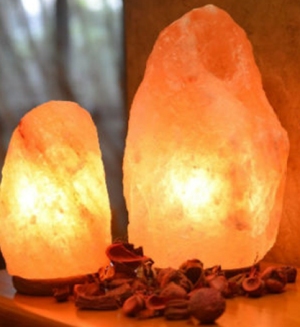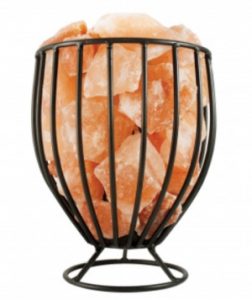 Himalayan Salt Lamps increase the attractiveness of living spaces and offer many benefits. Many are curious and want to know if these benefits are backed by science.
Himalayan Salt Lamps increase the attractiveness of living spaces and offer many benefits. Many are curious and want to know if these benefits are backed by science.
These lamps are made from hard blocks of ancient salt. Real Himalayan Salt Lamp are chiseled by hand and display a perfect pink color. These salt metal lamp baskets contain a light bulb in the middle of the basket that generates both light and heat.
Due to increased popularity salt lamps are now more prevalent and are available in various forms of decorative bowls that not only enhance the overall look of the lamp but create a gentle pink glow in the room.
Himalayan salt lamps generate negative ions which are reported to provide a variety of health benefits.
Despite their benefits, however, rock salt lamps can create problems that have a negative impact on health and environment. Below we describe some common problems and how to fix them.
The lamp sweats and spreads across the table. How to stop this from happening
By absorbing the microscopic water droplets from air Himalayan salt lamps remove environmental pollutants via a hygroscopic sweating process. This process occurs as solid salt crystals evaporate The lamps release clean moisture into the air and trap contaminants removed from the air inside the lamp. This sweating effect typically occurs in humid environments.
The easiest solution is not to burn the salt lamp 24/7 hours. Himalayan Salt generate natural negative ions, and it don’t use electrical power. Due to the impact of humid environments you should avoid placing these lamps near bathtubs, laundry and kitchen areas.
You can also use high-power watt bulb inside the lamp. The heat generated from these bulbs trap moisture inside lamps and prevent the lamp from sweating on surfaces.
People sometimes complain that the salt lamp isn’t purifying air quality. Why this happens and how to fix
Different reasons that affect the lamp’s negative ion generation ability include:
1. Your air duct system. If this is contaminated even the most massive pink basket lamp is unable to purify the air. So before using the salt lamp, inspect your home’s air filtration system thoroughly.
2. For a standard size room use 5-8 lb. lamp
3. For purifying larger rooms use an 8-11 lb. lamp
If you can’t find the larger size salt lamp place two or more small size lamps at opposite sides of the room.
Sometimes the lamp appears dirty. How to clean without melting or breaking its mineral salt
 Due to heat and warmness, most Himalayan Salt Lamps attract dirt, making the lamp look dingy after use. To clean the lamp, switch it off and remove the plug from the electrical socket. Allow the salt to cool down to room temperature.
Due to heat and warmness, most Himalayan Salt Lamps attract dirt, making the lamp look dingy after use. To clean the lamp, switch it off and remove the plug from the electrical socket. Allow the salt to cool down to room temperature.
Place the cooled lamp in water and use a sponge or soft fabric to gently clean the dirt from the metal part of the lamp. After washing the lamp, dry it partially with a lint-free fabric. Finally, plug the lamp back in, switch it on and allow it to heat up. As it heats it absorbs any remaining water droplets.
The bulb is burning too quickly. Why this happens and how to fix it
Many people report that the bulb burns too quickly, creating steam clouds around the bulb. Do the following to prevent this from happening:
♦ Check the type of bulb being used. If you’re using sunshine bulbs make sure these do not exceed the recommended lamp wattage.
♦ If you have to replace the bulb with a lower wattage bulb make sure the new bulb does not touch the salt crystal surface.
♦ If sweat from the crystal attaches to the new bulb this may trigger the glass of the metal lamp to crack, providing a clear path for steam reach the bulb.
Use the items described above to avoid problems with the care and use of your lamp.
Shift Frequency © 2019 – Educational material
